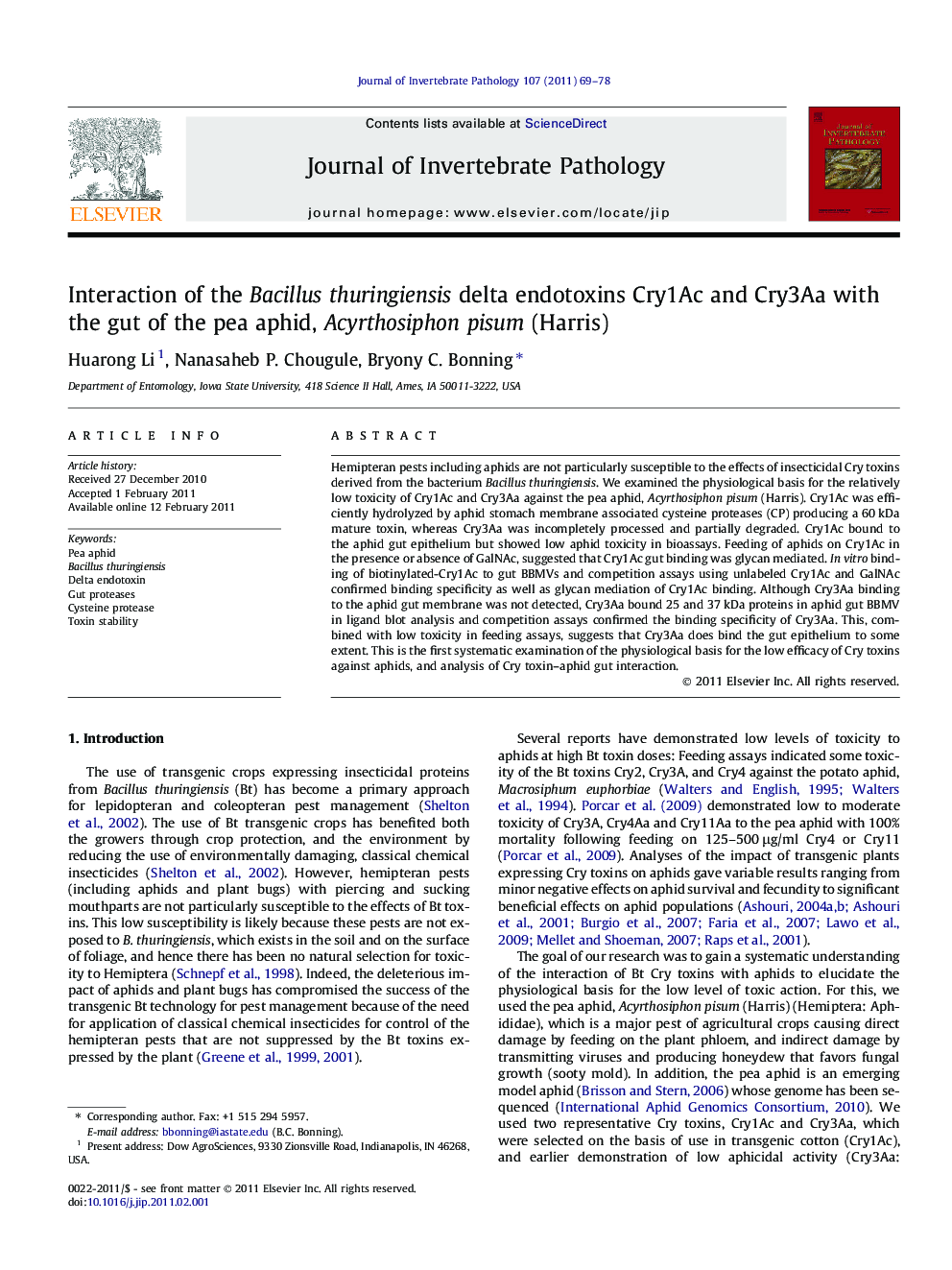| Article ID | Journal | Published Year | Pages | File Type |
|---|---|---|---|---|
| 4557997 | Journal of Invertebrate Pathology | 2011 | 10 Pages |
Hemipteran pests including aphids are not particularly susceptible to the effects of insecticidal Cry toxins derived from the bacterium Bacillus thuringiensis. We examined the physiological basis for the relatively low toxicity of Cry1Ac and Cry3Aa against the pea aphid, Acyrthosiphon pisum (Harris). Cry1Ac was efficiently hydrolyzed by aphid stomach membrane associated cysteine proteases (CP) producing a 60 kDa mature toxin, whereas Cry3Aa was incompletely processed and partially degraded. Cry1Ac bound to the aphid gut epithelium but showed low aphid toxicity in bioassays. Feeding of aphids on Cry1Ac in the presence or absence of GalNAc, suggested that Cry1Ac gut binding was glycan mediated. In vitro binding of biotinylated-Cry1Ac to gut BBMVs and competition assays using unlabeled Cry1Ac and GalNAc confirmed binding specificity as well as glycan mediation of Cry1Ac binding. Although Cry3Aa binding to the aphid gut membrane was not detected, Cry3Aa bound 25 and 37 kDa proteins in aphid gut BBMV in ligand blot analysis and competition assays confirmed the binding specificity of Cry3Aa. This, combined with low toxicity in feeding assays, suggests that Cry3Aa does bind the gut epithelium to some extent. This is the first systematic examination of the physiological basis for the low efficacy of Cry toxins against aphids, and analysis of Cry toxin–aphid gut interaction.
Graphical abstractHemipteran pests are not particularly susceptible to the effects of insecticidal toxins derived from the bacterium Bacillus thuringiensis (Bt). Here the first systematic analysis of physiological factors that may contribute to the very low toxicity of the Bt toxins Cry1Ac and Cry3Aa against the pea aphid, is described.Figure optionsDownload full-size imageDownload as PowerPoint slideResearch highlights► Cry1Ac was efficiently hydrolyzed by aphid gut proteases, while Cry3Aa was incompletely processed. ► Both toxins specifically bound pea aphid gut BBMV and binding of Cry1Ac was glycan mediated. ► Binding of Cry1Ac but not Cry3Aa to the aphid gut epithelium in vivo was detected. ► Both toxins had very low aphicidal activity even at 500 microgram protoxin/ml artificial diet.
